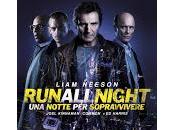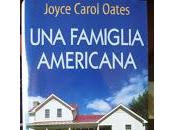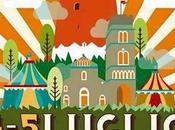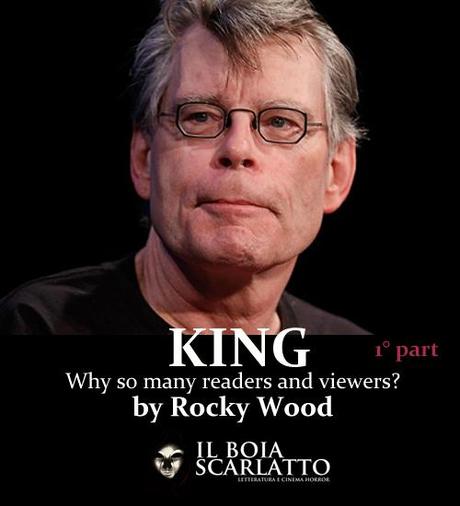
Guest post by my friend the writer and essayst Rocky Wood, who allowed me to publish this amazing article about Stephen King work. This article is also published in Italian (check here) translated by Luigi Musolino. Rocky Wood, Horror Writers Association President, is considered one of the greates experts in the world on Stephen King, he has published several essays, some of these are: Stephen King: Uncollected, Unpublished, (Cemetery Dance), Stephen King: The Non-Fiction (Cemetery Dance), Stephen King: A Literary Companion (McFarland, 2011). This contribute gives us the opportunity to discover the Stephen King world; Rocky Wood, in this first part of the article, writes about extraordinarily authentic King's characters, the realism of his fiction, the struggle between good and evil; these are the secrets of his success and longevity of its works. (read in Italian)
 Stephen King and Rocky Wood
Stephen King and Rocky Wood
Stephen King – Why so many Readers and Viewers? by Rocky Wood “THE DECISION to give the National Book Foundation's annual award for "distinguished contribution" to Stephen King is extraordinary, another low in the shocking process of dumbing down our cultural life. I've described King in the past as a writer of penny dreadfuls, but perhaps even that is too kind. He shares nothing with Edgar Allan Poe. What he is, is an immensely inadequate writer on a sentence-by-sentence, paragraph-by-paragraph, book-by-book basis. The publishing industry has stooped terribly low to bestow on King a lifetime award that has previously gone to the novelists Saul Bellow and Philip Roth and to playwright Arthur Miller. By awarding it to King they recognize nothing but the commercial value of his books, which sell in the millions but do little more for humanity than keep the publishing world afloat. If this is going to be the criterion in the future, then perhaps next year the committee should give its award for distinguished contribution to Danielle Steel, and surely the Nobel Prize for literature should go to J.K. Rowling.”
These words were written by literary critic Harold Bloom, in ‘The Boston Globe’ for 24 September 2003 and express some of the contempt that is still harboured by the literary elite toward Stephen King for the shocking crime of being popular.
This attitude forms a book end with some writers and critics in the speculative fiction realms of horror and so-called dark fiction who also seem, at times, to sneer at those in their own genre who transgress by recording huge sales.
These arguments aside I fall in the camp of those who regard King as one of the most important writers of our time – a man who can reach the heights of both literary and genre fiction – while also recognising his ‘dark side’ as an author who will consciously decide at times to match his self-description as the literary equivalent of a Big Mac and Fries.
Baldly stated King is not just the best-known and best-selling purveyor of American horror – in many ways he is American horror. In the last quarter of the twentieth century King re-created the genre through his storytelling, the power of his voice and the resonance of his tales, reflecting as he has America’s fears – technophobia; racial, social and sexual abuse; grinding poverty; social injustice; and the failings of the individual, the Great Society and the American Century.
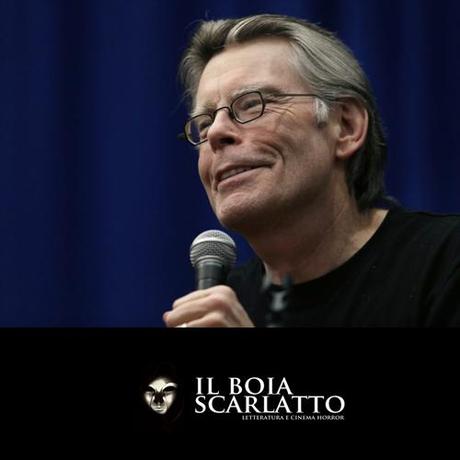
But what of King the phenomenon? Over 300 million books have been sold, around 90 movies and TV programs made from his material. At 32 books King has more entries at #1 on the New York Bestseller List than any other author! He has received Awards not only from the Horror community but more recently from the so-called literary community itself. His works, particularly his non-fiction ‘On Writing’, are studied in high schools and universities throughout America. All this cannot be achieved without a deep and raw connection with an audience.
Describing the joy that Stephen King brings his audience is both simple and complex. At its core is a powerful or entertaining story, well written by a master craftsman.
King is at once an innovator and is deeply grounded in the traditions of his chosen genres as well as literature in general. He is both a 20th Century man and a self-confessed ‘hick’, living in Maine, a semi-rural backwater State and avoiding the normal ‘rewards’ of celebrity.
As an innovator King was both the first major author to release a significant story and to serialise another on the Internet. He reinvented the serial novel with ‘The Green Mile’ and has written both original works and adapted his own for the screen.
He has an astounding ability to tell a tale, describe a scene in glorious detail and deliver a fully formed character. He takes us into the minds and motivations of his characters (especially children). When he finally chose to do so with women King proved the breadth of this skill. Even the thought processes of a dog, Cujo, were laid out for the reader.
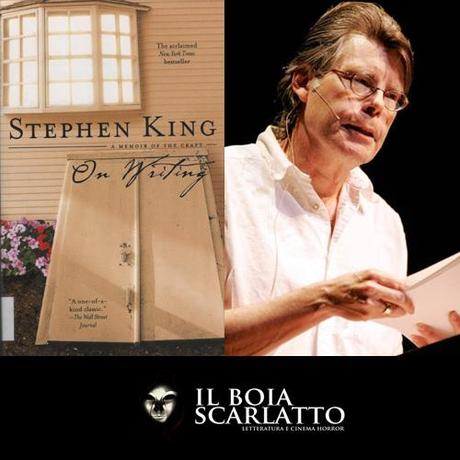
King’s work appeals to young and old, male and female and to people of very diverse cultural backgrounds, this despite the very American nature of his writing. An adult King reader, perhaps wary of some themes, can ease a younger person into the body of work through such stories as ‘The Eyes of the Dragon’. If horror gives you nightmares read his fantasy; if fantasy bores you there are many mainstream stories of power such as ‘The New Yorker’ short stories and ‘Hearts in Atlantis’. If Science Fiction appeals to you King provides a number of stories in that genre, although they are not regarded as the strongest of his works. King has even worked in the detective/crime genre.
King’s prolific nature is used as a weapon against his overall body of work and his position in the literary firmament. Yet, one of the advantages of this great selection of tales is that it surely contains something for any reader, except perhaps those who proclaim only dense and unreadable works to be ‘worthy’.
Apart from creating his own mythologies King has never been afraid to dive into the roots of horror and fantasy to deliver vampires, werewolves, haunted houses and to otherwise add to well-trodden themes. He has been just as willing to merge other mythologies into his work (Oz in The Dark Tower Cycle, for example) or to add to those created by others such as Lovecraft and Conan Doyle.
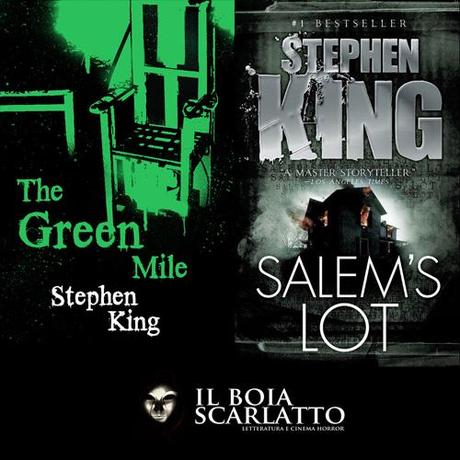
King ranges easily from the unique tale (‘The Green Mile’) to the effective reworking of an older theme (‘Salem’s Lot’) and back to his own more original technophobia. Horror literature is replete with haunted houses but King gave us the not only the world’s most famous haunted hotel, a haunted car, a haunted laundry machine and even the most effective haunted bathtub ever imagined.
The core Theme in King’s Work is that of Good versus Evil, the Dark Side versus the White. Sometimes this is portrayed in religious terms (for instance, in ‘The Stand’, ‘Salem’s Lot’ and ‘Desperation’) but often simply through that of good men and women (Roland and his ka-tet in ‘The Dark Tower’ as an example) standing against the powers of evil, often unsuccessfully.
All too often, as in the ‘real’ world, good men die, good women are beaten down and good causes lost. King has never resiled from the truth of a story where it is clear that there is no happy ending. Yet, in King’s other constant Themes of Hope and Redemption the Everyman individual will often rise up and ultimately win through, although often at great cost.
As examples, Johnny Smith with his oh-so anonymous name is able to defeat a megalomaniac but loses his life in ‘The Dead Zone’. Stu Redman, the only survivor of the four men sent to confront Flagg in ‘The Stand’ carries a splendidly resonant surname. John Coffey (and the choice of initials was deliberate) was unable to save two little girls but did save a small mouse and a woman’s life before being cruelly taken from this world.
.
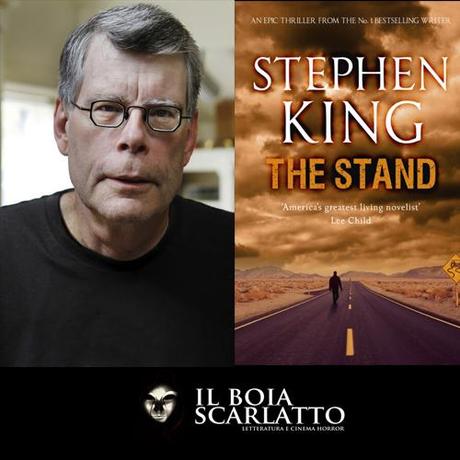
King’s characterisations and his ability to get the reader to empathise with his creations are nothing short of superb.
At times King ties us so deeply to a character that we also suffer the loss when they die. King has often pointed out that he does not kill characters, the story does. Mattie Devore in ‘Bag of Bones’, little Tad Trenton in ‘Cujo’, Nick Andros in ‘The Stand’, Susan Delgado (‘Wizard and Glass’), Wolf in ‘The Talisman’ and Oy in ‘The Dark Tower’ serve as tear-jerking examples.
King’s shorter works often provide his most haunting, memorable or unique characters. Think Gary and his tormentor in ‘The Man in the Black Suit’; Stella Godlin of ‘The Reach’; or the maitre d’ at the Gotham Café.
In major works the lesser characters are often among the most memorable. Duddits Cavell in ‘Dreamcatcher’, Mr Jingles or indeed Delacroix in ‘The Green Mile’, Rhea of the Coos (in ‘Wizard and Glass’), The Trashcan Man and Tom Cullen (of ‘The Stand’) are all unique creations and live in one’s memory long after the story is laid aside.
The ranks of the villains King has created are either original (Pennywise, Andre Linoge, the Overlook Hotel, Randall Flagg, the Crimson King) or at least provide a powerful addition to the ranks of the derivative (such Leland Gaunt, Kurt Barlow, Max Devore).
We are also given characters for whom we have outright dislike – Percy Wetmore (in ‘The Green Mile’), Ace Merrill (in ‘The Body’ and ‘Needful Things’), Pop Merrill (in ‘The Sun Dog’) and Roland LeBay (in ‘Christine’) are all nasty examples of humanity but at the same time all too believable. Where a reader may not really believe in a vampire, werewolf or the supernatural, it is easy to accept the existence of these human monsters. We probably all know one or two ourselves.

It is astounding how many of King’s characters are original and memorable and time is likely to show many in the ranks of the legendary fictional characters created by such as Twain, Tolkien or Shakespeare. Among the characters that may achieve such longevity are Roland Deschain, Randall Flagg, Jack Torrance, John Coffey and Carrie White.
King’s ability to create an entire World (Roland’s All-World, for instance) or the magnificently painted lives of small towns and cities and their residents is close to legendary.
Castle Rock is so comfortable to King readers that it feels like pulling on an old jumper when we delve back into its doings. Derry, a larger town, is less comfortable but it takes only a few words early in ‘Dreamcatcher’ to bring it back into focus for seasoned readers. Roland Deschain’s world is a creation to rival that of Tolkien’s Middle Earth. The Territories were sketched in ‘The Talisman’ and we received another glance at the end of ‘Black House’. Undoubtedly, when King and Straub choose to complete the story of Jack Sawyer, we will receive a much deeper description of that world.
Stephen King’s Maine is now legend. Apart from Castle Rock and Derry dozens of small towns have grabbed our imaginations or stirred our nightmares. For instance, Jerusalem’s Lot is synonymous with the modern American vampire

But it is not simply the geography of Maine that King paints so superbly. The people, the lifestyle, the self-reliant and closely held Yankee culture, and the community all shine through. The benefits and of course the downsides of small-town, rural and hard scrabble life in Maine are delivered to the reader, warts and all in story after story. It is this grounding in absolute reality that is one of the great attractors of King’s fiction and will be one of the keys to its standing the test of time.
Rocky Wood's article continues in the next episode ....
(read in Italian)
Profile Writer and President of the Horror Writers Association, he received Bram Stoker Award nominations for Stephen King: Uncollected, Unpublished (latest edition from overlookconnection.com), Stephen King: The Non-Fiction' (Cemetery Dance) and Stephen King: A Literary Companion (McFarland, 2011), the latter of which won the Award. His first graphic novel, Horrors! Great Tales of Fear and Their Creators (McFarland, 2010), received a Dark Quill Award nomination. His latest book is Witch Hunts: A Graphic History of the Burning Times (McFarland, 2012), co-written by Lisa Morton and illustrated by Greg Chapman. Rocky Wood Official Web Site

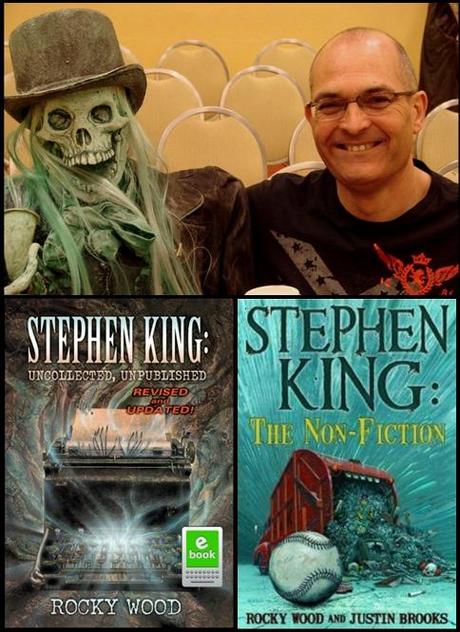
Witch Hunts: A Graphic History of the Burning Times - Trailer
